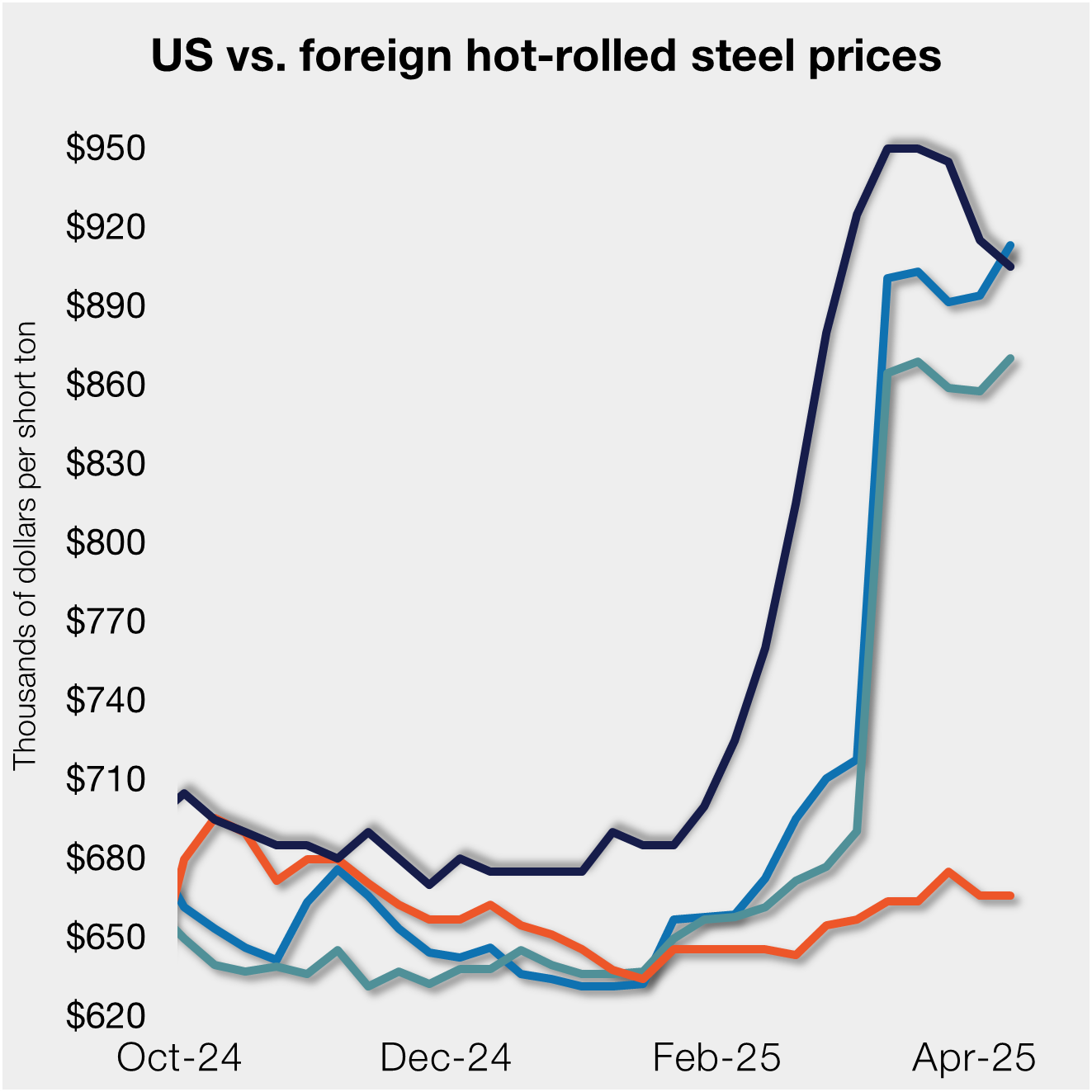Steel Products

Market Chatter This Week
Written by Becca Moczygemba
August 9, 2023
On Monday and Tuesday of this week, SMU polled steel buyers on a variety of subjects, including steel prices, demand levels, sheet prices abroad, inventory, and what people are talking about in the market. Rather than summarizing the comments we received, we are sharing some of them in each buyer’s own words.
We want to hear your thoughts, too! Contact david@steelmarketupdate.com to be included in our questionnaires.
What’s something that’s going on in the market that nobody is talking about?
“Service center consolidation. It has taken a bit of a back seat to other topics, but there are still entirely too many players out there, especially the regional houses.”
“Potential of auto strike against one of the Big 3 and the Cleveland-Cliffs adder on HBI – will it stick ?“
“When mill price increases come through, they’re larger increases than what we’ve seen in the past. That is, starting off with $50-100/ton increases vs the old $20-25/ton. Perhaps smaller steps rather than large jumps would help these increases to stick.“
“The closer we get to election time, the slower the market.”
“Geopolitical implications of China/Russia pact and others (UAE) jumping on board.”
“The drop in imports and import licenses is more significant than people realize.“
“Pending UAW strike and its impact on steel prices. Weather issues impacting steel production across country. Lack of rail cars to ship steel from the mills.“
“The amount of outages that are piling up in September and October.”
“Are the scheduled mill outages offset by new lines or not?“
“The amount of food storage and food processing plants going out of business, especially in Texas .”
“The status of the sale of Evraz.”
When and at what price level do you think steel prices will bottom, and why?
“I say November – too much capacity and foreign coming in.”
“Unfortunately, we are projecting a few more months of negativity. Maybe not big dips, but it ought to keep going lower until the fall. “
“August, unless United Auto Workers strike against one of the Big 3 automakers in September.”
“$800/ton HRC, $950/ton for CRC and HDG. Low inventories, higher raw material costs, fuel costs, and longer mill lead times.”
“$665/ton. I still see softness in the market that will allow it to dip to this point, but enough forward demand to stop it from going lower.”
“HRC between $750-$800/ton in October assuming there is no auto strike.”
“August, $850-$899 looks like stabilization in the market at the moment.“
“I do not think the worst will come until lead times are into November or mid-to-late Q4.”
“I think we are still riding at the top end for plate. There is a chance of some weakness as we get into November/December.“
Is demand improving, declining or stable, and why?
“Declining – high interest rates slowing down the economy.”
“Demand is OK, thank goodness. Automotive and the potential strikes are an important thing to look out for though.”
“Stable to improving, Q4 is looking to be stronger than Q3.”
“Stable with orders coming in and shipping.”
“Demand is starting to decline for the future months. Buyers are hesitant to make any commitments.”
“Demand is stable at the moment.”
“Declining – customers waiting until the last moment to buy when they need material to get the best price.”
Is inventory moving faster or slower than this time last year – and why?
“Overall, our inventory is moving faster, but that is because we’re stealing market share.”
“July was similar to July 2022, but August is looking to be slower than last year. A stall in material pricing caused customers to pause purchases rather than place new orders.”
“What inventory is left on anyone’s floor? Moving out fast.”
“Inventory is moving a bit faster currently, automotive pulling well, and spot until the last week had been better.”
“Faster, we planned on going after market share gains.”
“Slower – down 12% – economy not as robust as last year.”
With US sheet prices higher than prices abroad, are imports more attractive than domestic material? Why or why not?
“Not really – the lead times and domestic mills will deal to get the order.”
“They definitely are. As long as you can wait for the lead times (and you don’t think domestic prices are going to tank), imports are a no-brainer.”
“Imports are not attractive on most products. Only on some harder to get items and pre-painted products.”
“They are on paper, but with domestic buyers expecting the market to crumble, I doubt they are willing to commit to the lead times.”
“Yes, due to a gap that is still quite high specially on plate.”
“Too much lag-time in delivery during a volatile market.”
“No – not willing to take a chance of material you won’t see for three to four months.”

Becca Moczygemba
Read more from Becca MoczygembaLatest in Steel Products

Construction growth slowed in March on tariff woes: Dodge
The decline comes after reaching a record high in January to kickstart the year.

Return of S232 zapped gap between US and EU HR prices, Asian HR remains cheaper
Domestic hot-rolled (HR) coil prices declined this week for a third straight week. Most offshore markets bucked the trend and gained ground. Uncertainty in the US market around tariffs, especially after “Liberation Day,” caused US prices to slip as buyers moved to the sidelines. It’s unclear to date whether the 90-day pause on the more […]

SMU Steel Demand Index momentum slows further
SMU’s Steel Demand Index growth eased again, according to early April indicators. The slowdown comes after the index reached a four-year high in late February.

SMU Community Chat replay now available
The latest SMU Community Chat webinar reply is now available on our website to all members. After logging in at steelmarketupdate.com, visit the community tab and look under the “previous webinars” section of the dropdown menu. All past Community Chat webinars are also available under that selection. If you need help accessing the webinar replay, or if your company […]

US light-vehicle sales accelerate in March
US light-vehicle (LV) sales increased to an unadjusted 1.59 million units in March, more than a 30% surge over February and 10.7% above year-ago totals, according to US Bureau of Economic Analysis data.
